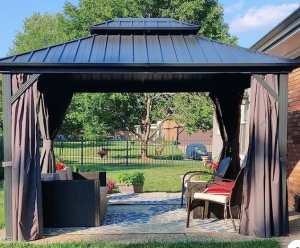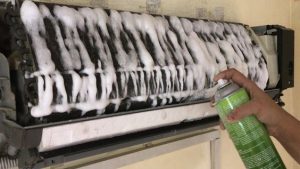When Should You Consider Removing a Tree?

Trees have many positive effects on our environment besides being aesthetically pleasing. But there are some situations in which contacting the best tree removal company in Gresham for tree removal becomes necessary. Before taking any action towards tree removal, careful consideration should be given to a number of variables, including the tree’s health and condition, its proximity to your home or other structures, and any potential threats. Let’s explore the key factors that should be taken into account when deciding to remove a tree. So, if you find yourself pondering whether that towering oak or graceful willow should stay or go, read on to discover the telltale signs and considerations that will guide you toward the best course of action.
Table of Contents
Structural Damage
Large voids, severe decay, or significant trunk splits in trees can jeopardize their stability. The chance of the tree collapsing is increased by these structural flaws, particularly in stormy or windy conditions. Additionally, a diseased tree or one with possible risks may exhibit dead branches and a receding canopy. An arborist must carefully analyze these circumstances in order to determine whether the tree constitutes a risk to people or property.
Leaning or Unstable Tree
When a tree starts leaning noticeably, it can be a cause for concern. A slight lean is not always problematic, as some trees naturally grow at an angle. However, if a tree suddenly leans or the angle becomes more pronounced, it may indicate root or foundation issues. Changes in the soil, like erosion or poor root development, can weaken the tree’s anchoring system and make it prone to uprooting. An unstable tree poses a significant threat to nearby structures, utility lines, and individuals, making removal necessary to mitigate potential hazards.
Disease and Pest Infestation
Trees are susceptible to diseases and pest infestations, which can lead to a severe decline in their health and structural integrity. Signs of tree diseases include extensive dieback, wilting leaves, discoloration, cankers, and abnormal growths. Similarly, insect infestations, such as bark beetles or borers, can weaken the tree by boring through its bark, disrupting nutrient transport and causing extensive damage. When a tree’s overall health is compromised, and these issues persist despite treatments, removal may be the only option to prevent the spread of diseases or pests to nearby trees.
Encroachment and Space Constraints
In urban or suburban environments, trees planted in inadequate spaces can cause several issues. As trees grow larger, their roots can extend into buildings, underground utilities, or pavement, leading to structural damage. Overgrown tree canopies may also interfere with power lines or obstruct visibility on roads, posing safety risks. In such cases, pruning alone may not be sufficient to address the encroachment. Removal might be necessary to prevent further damage, ensure public safety, and allow space for other trees or plants to thrive.
Extensive Damage or Decline
Trees that have suffered extensive damage due to severe storms, lightning strikes, or human interference might be unsalvagable and pose significant risks. Broken or hanging branches, split trunks, or exposed roots can compromise a tree’s stability and health. Similarly, if a tree is in a state of decline, with sparse foliage, stunted growth, or frequent branch loss, it may indicate underlying issues that cannot be resolved. An arborist can assess the extent of damage or decline and provide guidance on whether the tree can recover or if removal is necessary for safety and aesthetic reasons.
Excessive Deadwood
The presence of excessive deadwood is another clear indication that a tree may require removal. Dead branches lose their structural integrity and can fall unexpectedly, posing risks to people, property, and other plant life. Large dead limbs or an abundance of dead branches throughout the tree suggest a decline in the tree’s overall health and vitality. Regular inspections by arborists can unearth hazardous deadwood and determine if the tree can be salvaged through pruning or if removal is necessary for safety reasons.
Interference With Utilities
When a tree’s growth interferes with power lines, underground pipes, or other utilities, it can create a hazardous situation. Over time, the tree’s branches can damage power lines, leading to power outages or safety risks. In some cases, the roots may infiltrate underground pipes, causing blockages and costly repairs. To prevent such utility-related issues and ensure public safety, removing the tree may be necessary, particularly if pruning or other mitigation measures cannot effectively address the problem.
Involving qualified arborists or tree removal specialists is essential because they can evaluate the issue and advise on the best course of action. In order to preserve the ecological balance and guarantee the long-term well-being of the environment, it is also crucial to take into account replanting with suitable native species while removing a tree.





